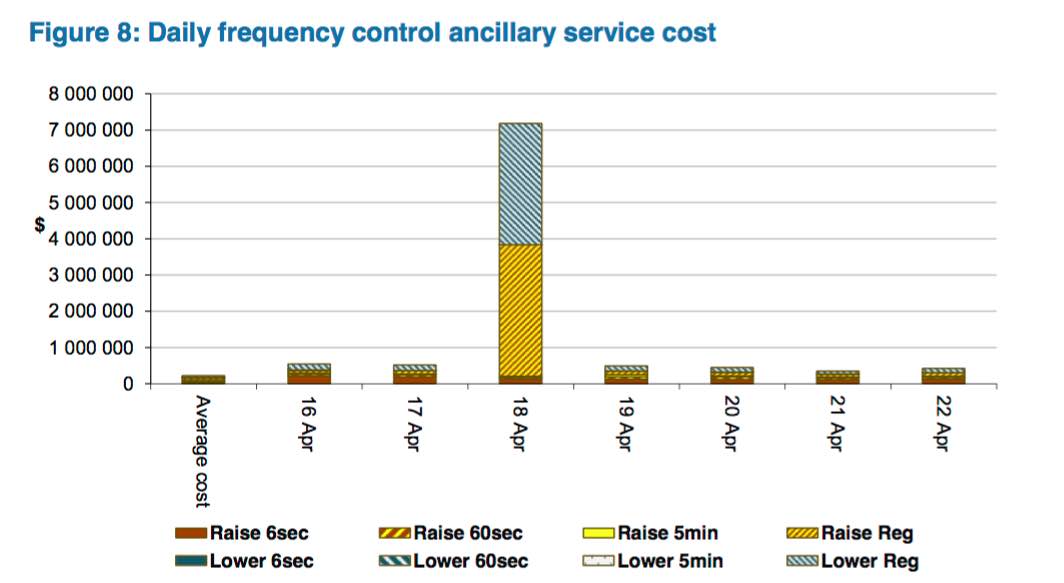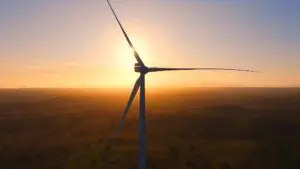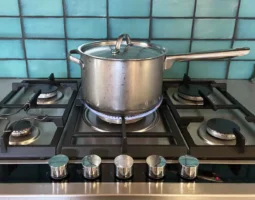A series of reports from Australia’s Energy Regulator has illustrated how Australia’s big energy players have taken advantage of their market dominance to push up prices for critical grid services, and underline why South Australia was so keen to support the new Tesla big battery.
The Tesla battery, due to be installed by December 1, has been derided by the federal government as too small to do much and about as useful as a Big Banana or Big Pineapple.
But going by the AER reports, it could completely puncture the price gouging (which, we should point out, is perfectly legal according to the market rules) by major energy players that is costing consumers $60 million a year.
The series of AER reports highlight how, on at least seven occasions over the last 10 months, the actions of the major players – AGL, Origin and Engie – managed to push prices of Frequency Control Ancillary Services FCAS) in South Australia up by nearly 100-fold, despite having more than enough capacity.
FCAS is needed to maintain the frequency of the power system within the operating standards, and is called upon by the Australian Energy Market Operator to cope with planned and unplanned network outages, particularly the Heywood inter-connector that links South Australia and Victoria.
AEMO needs around 35MW (megawatts) of capacity to raise or lower the frequency in South Australia in such instances, and AGL, Origin, and Engie between them have 386MW and 446MW of capacity available in that state to deal with this (see table above).
That represents between 11 and 15 times the capacity needed. But on the seven occasions investigated by AER, the big players contrived to create a short-fall of just a single MW – forcing the prices extracted by these players to soar into the stratosphere.
This is an illustration of how they do it.
As you can see, the big generators had more than enough capacity, but only made 34MW available on November 9 at a relatively cheap price. AEMO needed just 1MW more to meet its demands, but that single MW is priced high, and so sends the price for the whole service up dramatically.
“As 1 MW of the 35 MW requirement for both lower and raise services was met by high-priced capacity, prices for both lower and raise regulation services were around $6500/MW for approximately fourteen and a half hours, exceeding $5000/MW for 175 dispatch intervals,” the AER said.
“AGL’s Torrens Island set the price for all but one of the 175 dispatch intervals priced above $5000/MW in both raise and lower regulation services.”
“It’s clear electricity companies exploit that lack of competition and gouge prices whenever they can. Our grid scale battery will add additional competition to this market, putting downward pressure on the cost of stability services and, ultimately, power bills for households and businesses.”
The AER analysis shows that the pattern of making only 34MW available was repeated – sometimes because capacity was “unavailable” (often due to “technical” or other obscure issues), or by simply using their market power to rebid capacity from low to high prices.
Take, for instance, March 30:
“From 9.05 am on 30 March, AGL rebid 2 MW of raise and lower regulation services from low to high prices. This left only 34 MW of regulation services priced below $5000/MW, one megawatt less than the requirement. As a result, high priced regulation services were needed to meet the requirement.”
The price for local regulation services in South Australia shot to above $11 400/MW and – because their market power is complete – stayed there for 54 consecutive dispatch intervals from 9.05am to 1.30pm.
Again on March 21, during a planned outage”
“A rebid by AGL, effective from 11.05 am, which shifted 6 MW of lower and raise regulation services from prices below $300/MW to $9000/MW reduced the amount of effective capacity priced less than $5000/MW to 34 MW, 1 MW less than the 35MW requirement.”
As a result, prices for both services reached around $9000/MW from 11.05 am until the outage ended at 4.25 pm.
On another occasion, an unplanned outage on April 18, AGL rebid 3MW of raise and lower regulation services at Torrens Island power station from $300/MW to $13 000/MW and above. This 3MW set the market price, and it remained high until AEMO intervened and introduced “administrative pricing” of $300/MW.
Like the November 9 incident, that particular event earned the big players a $7 million windfall. Another $6 million was earned on November 25.
The reasons cited are often obscure. In one instance on May 22, when the price went to $10,700/MW, the AER gives the reason supplied by Origin Energy as: 1726A INC SA DEM 5PD 1724MW > 30PD 1572MW @HHE1800 SL”.
It offers no further explanation, and the consumer or observer is none the wiser.
Such is the cosy, coded world of Australia’s energy markets.
And it is worth pointing out that these reports have taken up to 10 months to come to light, even though most players in the industry know within a day or two exactly what has happened when they analyse the bidding.
This creation of scarcity is a common tactic in both FCAS and wholesale energy markets in Australia.
It has been identified by network operators, smaller retailers, energy equipment suppliers, analysts, and governments, but is laughingly dismissed by ACCC boss Rod Sims as an example of “the market at work”.
However, analysis shows it has added billions to the cost of wholesale generation and therefore consumer costs.
And, with the exception of South Australia and Queensland, governments and regulators have done absolutely nothing to stop it, instead blaming renewable energy policies or the lack of a climate policy for high electricity prices.
Queensland intervened a few months ago to stop the wholesale price manipulation by its state-owned generators, a result that has seen power prices fall by a third.
South Australia does not own the generators in its state, so instead it has had to turn to other means, including commissioning its own emergency generator to ensure there is enough capacity in the event the big players try to create “scarcity” as they did in the February load shedding, and to deal with these FCAS rorts.
The Tesla big battery will be contracted by South Australia to bid into the market for FCAS – and to provide other network services. It will cost South Australia about $50 million over 10 years, but on the basis of the AER reports it will get its money back very quickly.
Battery storage also has the potential to stop such gaming of prices in the wholesale markets, but a proposal put forward by large energy users, and supported by battery storage makers and AEMO, has been fought vigorously by the big generators, and the energy rule maker has repeatedly delayed a final decision on the proposal.
Another 30MW battery will also be built in SA early next year, but it will be operated by AGL, although the network operator Elecranet will have some control over its use.












